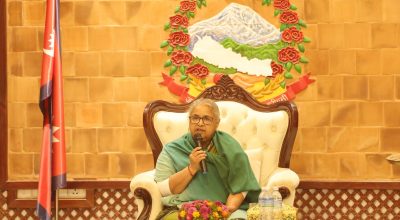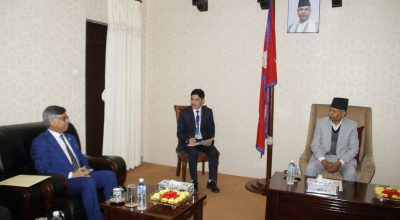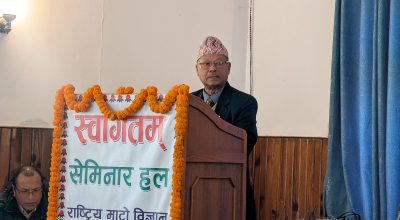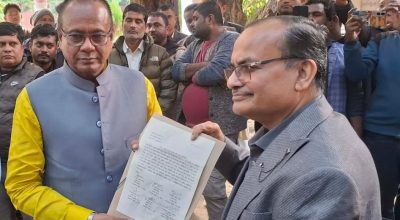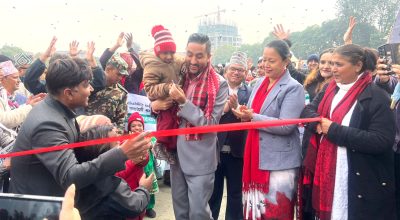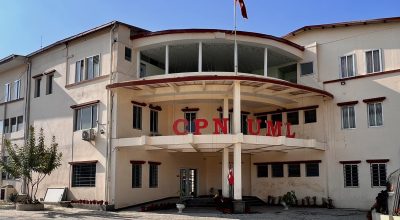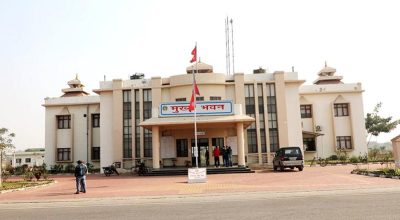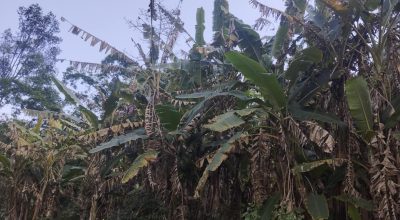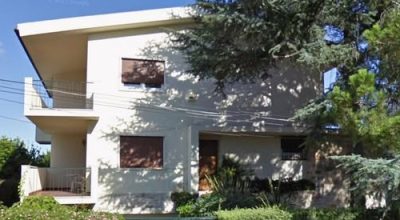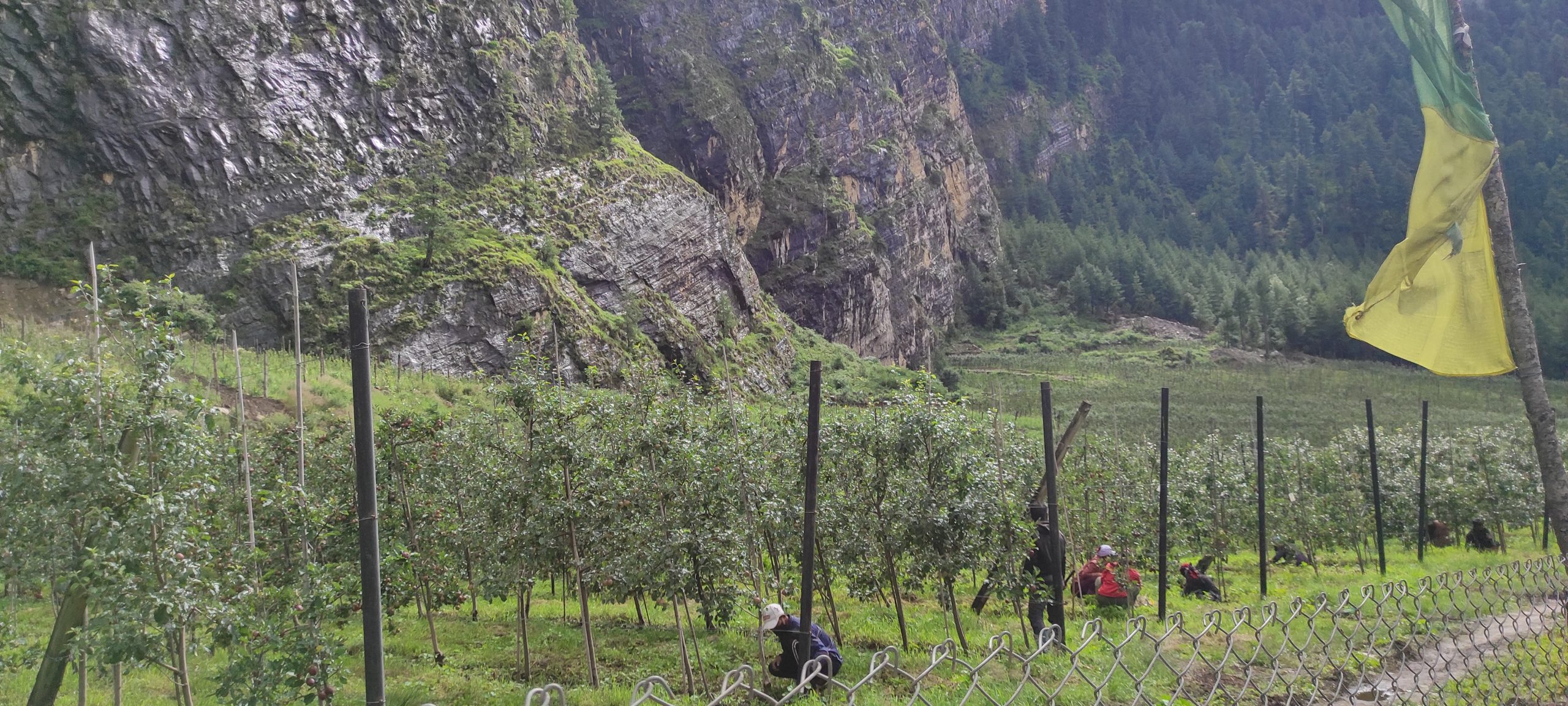
Manang, Aug 7: Farmers of the mountainous district, Manang, are getting attracted to apple farming with many finding their calling in this sector. Sol Bahadur Gurung of Naso Rural Municipality-8 has switched to apple farming from traditional agriculture with the farming generating high incomes.
“I switched to hybrid apple farming from cereal crops as the latter produced in low quantity and the harvest got a delay. I could not generate good income from cereal crop farming as well,” he said.
The High Density Apple Farm started growing hybrid apples on four ropanis of land by applying the high density farming technology. Encouraged by good yields, the apple farming has gradually expanded, he said.
“Most of the Manang farmers have planted apple saplings brought from the Farm, and are generating good income from it,” he said. The Farm has been expanding apple cultivation of various varieties including Fuji, Gala, Golden and Red Delicious initially brought from Italy and Serbia. These species are said to be producing much yields.
Apple trees of these varieties start bearing fruits two years after plantation, and their production increases every year. So, farmers have attracted to it, he said. “My apple trees started bearing fruits one year after plantation. It has been four years since they bore fruits.” He started the farming with the initial investment of Rs 1 million. Now, he is satisfied with the incomes from the farming.
Similarly, Tanka Gurung of Tilche of Naso Rural Municipality-6 has grown hybrid apple on three ropanis of land. This apple cultivar bears fruits much earlier, and we can get quick returns on the investment, he said. “There is however a problem in transporting the apple production to the market due to various reasons like a lack of accessible roan network. We are satisfied with the apple production however,” he said.
Most of the farmers of the area have switched to hybrid apple farming using the high density farming technology, he said.
Although apple crops can grow nearly in any hardiness zone, the fruit tend to thrive in climates where it is cold in the winter and moderate temperature in the summer with medium to high humidity rather than a hot and dry climate. In general, apples can grow best in the regions where the temperature rarely increases above 90 degrees.
They can grow best on a well-drain, loam soils with a depth of 45 cm and a pH range of pH 5.5-6.5. The soil should be free of hard substrata and water-logged conditions. Soils with heavy clay or compact subsoil should be avoided.
An apple tree can produce up to 45 kilograms of apple in a season if there is a favourable weather, said agriculture experts.
Most of the farmers in Manang district have cultivated hybrid apple using the high density farming technology, said Rajeshwor Silwal, chief of the Agriculture Knowledge Centre, Manang. They are getting attracted to the farming with much productions leading to an increase in their incomes, he said, adding that they were providing technical service to the farmers by reaching their orchards. “Technicians have been deployed from the Centre and local levels to provide service to the farmers. Apple cultivation is expanding from the lower parts of Manang to the higher,” he said.
Initial phase and development of technology
The Agro Manang Private Limited introduced the high density farming technology by planting apple saplings brought by former lawmaker Polden Chhopang Gurung from Italy and Serbia. It has been growing apple species of Gala, Golden and Fuji on 735 ropanis of land at Bhratang of Dingsyang Rural Municipality in Manang.
It produced over 450 metric tonnes of apple this year, said Samaraj Gurung, chair of the Agro Manang. Last year, it produced more than 400 metric tonnes. It takes around one and a half months to pluck apples from the orchard, he said, adding that they generated an annual income of over Rs 50 million from apple farming.
The production is supplied to various major cities of Nepal including Kathmandu and Pokhara under the brand of ‘Himalayan Fresh’. Cold stores have been set up at Bhratang, Besishahar and Kathmandu. So far, it has received Rs 22 million for the project, he said.
“At present, Nepal has imported apples worth Rs 13 billion annually from foreign countries. We must produce apples enough to meet the demand at home to stop the imports. For this, it requires much motivation and encouragement for farmers to engage in apple farming,” said former lawmaker Polden.
We have a plan to export the apple production here to third countries through Kolkata in India, said Samaraj. At Bhratang of Dinsyang Rural Municipality-1, apple cultivation has expanded in additional land taken on lease for 27 years for Rs 129 million, he said. So far, over Rs 300 million has been invested in the Farm.
The Himali (High Mountain Agribusiness and Livelihood Improvement) Project provided a subsidy of Rs 22 million to grow apple, and the Prime Minister Modernisation Project provided subsidies to purchase fertilisers and seeds, and in packaging, he said. Most of the total 62,000 apple trees in the orchard have started producing apples, and 32 people have been directly employed, he added.
Expansion of apple cultivation
According to the Knowledge Centre, Manang, apple cultivation has expanded on over 13,000 hectares of land using the technology. It said 50 percent subsidies have been provided in the management, 75 percent in apple saplings after selecting the farmers. It produces up to 21 metric tonnes of apple each hectare when there is a good production, said the knowledge centre chief Silwal.
Apples produced using the technology are generally considered high quality, sweet and juicy increasing the demand, he said. The production is exported to Besisahar, Pokhara, Chitwan, Kathmandu and the international market as well, said the knowledge centre.
Transportation problem
A lack of road connectivity has posed a problem in transporting the produce from Manang, it has been said. As a result, apples produced in Manang are not getting a decent price, complained the farmers. Due to bad condition of roads, in many cases, fresh and healthy apples end up stained by colliding with each other when they are transported and reach the market, they said. RSS





